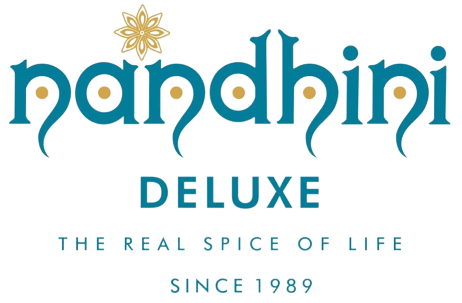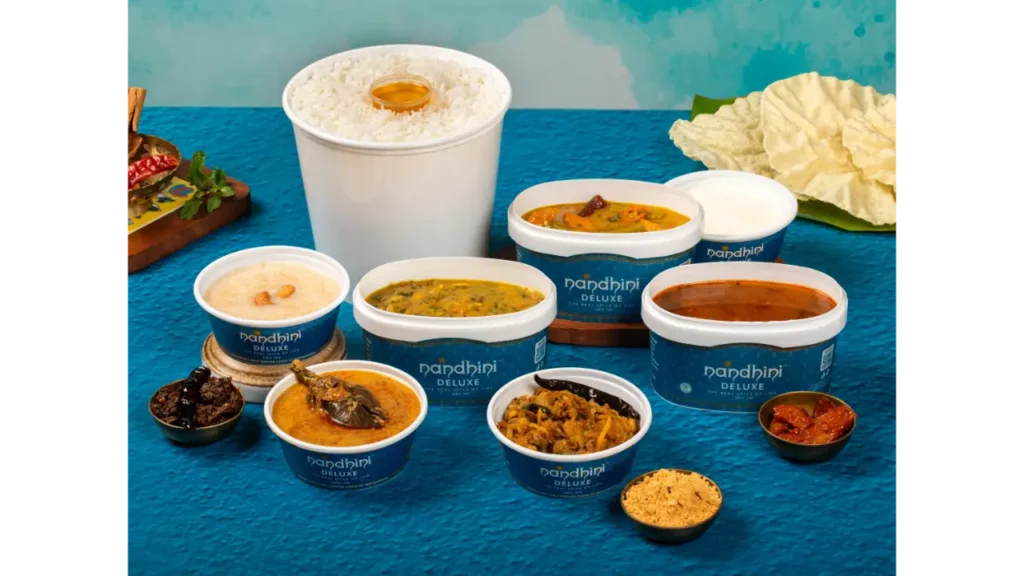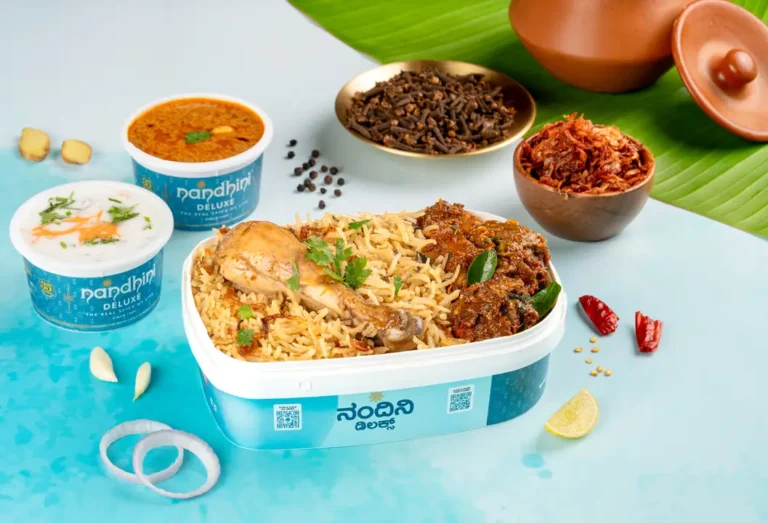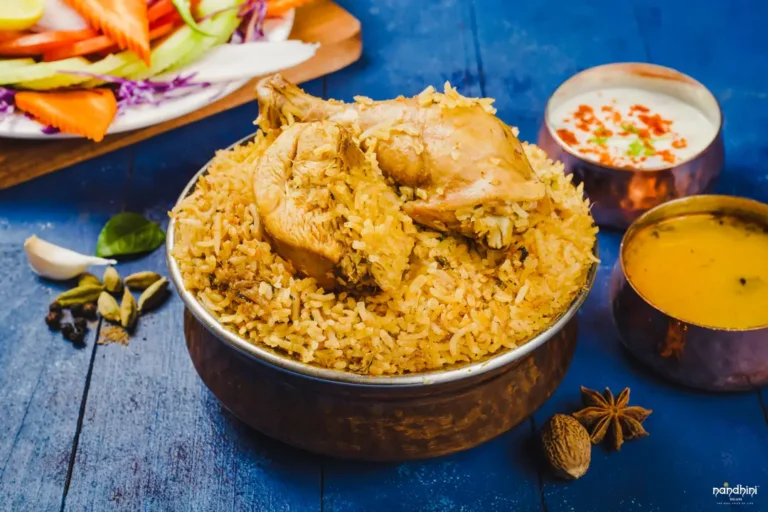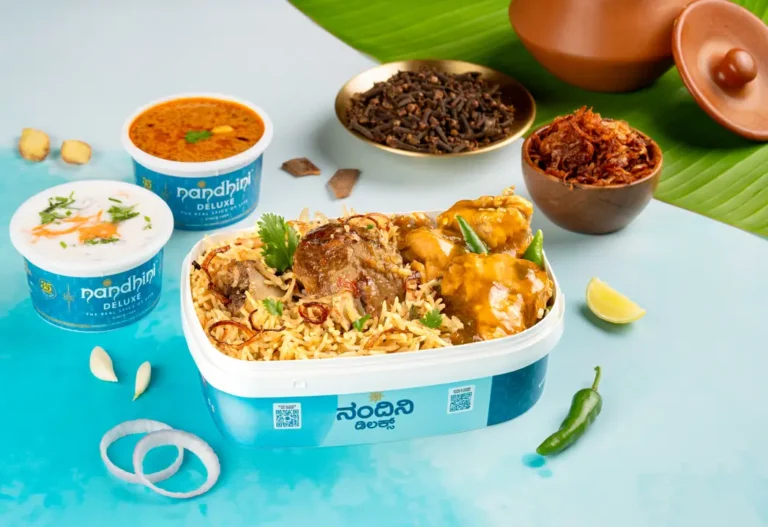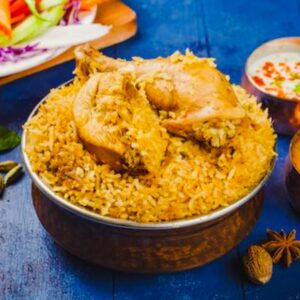Introduction – When Andhra Cuisine Found a Home in Bangalore
Andhra cuisine has long been synonymous with bold spice, tangy complexity, and an almost meditative devotion to balance. When these fiery traditions crossed into Bangalore’s cosmopolitan food scene, a quiet transformation began-one that merged intensity with accessibility. The result is not a diluted version of Andhra cooking but a new dialect of flavor that speaks to Bangalore’s evolving palate.
In its essence, Andhra cuisine is defined by contrast: heat and sourness, aroma and bite, texture and simplicity. Each region within Andhra Pradesh adds a distinct voice to this conversation-Coastal Andhra with its tamarind-laced seafood, Rayalaseema with its earthy spice, and the Telangana-influenced hinterlands where millet and heat meet. When these recipes reached Bangalore through migrants, restaurateurs, and families seeking the familiar warmth of home food, they found an audience ready for something intense yet comforting.
Restaurants such as Nandhini became cultural anchors, translating this cuisine without losing its native rhythm. Their thalis filled with gongura pachadi, pulihora, and naatu kodi pulusu have become weekend rituals for countless diners. Bangalore’s food identity-a mosaic of influences from Kodava to Hyderabadi-absorbed Andhra’s vigor and gave it a softer cadence. Here, Andhra meals evolved to suit the city’s mild-weather rhythm: still fiery, yet fine-tuned to balance spice with texture, acidity with aroma.
This culinary meeting point is more than a menu trend. It’s a story of migration, adaptation, and shared memory-how the heat of Guntur chillies found equilibrium in the temperate kitchens of Bangalore, and how Andhra restaurants became local institutions shaping the city’s spice identity.
Key Takeaways
- Andhra cuisine blends intense spice and tang, defined by its regional substyles.
- In Bangalore, these flavors adapted without losing authenticity, thanks to migration and restaurant culture.
- Nandhini’s Andhra Cuisine stands out as a key player preserving and localizing Andhra’s culinary identity.
- The fusion between Andhra’s fiery roots and Bangalore’s cosmopolitan taste reflects cultural balance rather than compromise.
Foundations of Andhra Cuisine – Identity and Variation
The foundation of Andhra cuisine lies in the precise interplay of flavor and geography. Andhra Pradesh’s diverse terrain-stretching from the fertile deltas of the Godavari and Krishna rivers to the arid plains of Rayalaseema-dictates not only what grows but how it tastes on the plate. The result is a cuisine layered with contrast, complexity, and precision.
Coastal Andhra cooking relies heavily on tamarind, coconut, and seafood. The dishes here carry a refreshing acidity-pulusu stews and chepala pulusu (fish curry) form the heart of many family tables. Inland, in the Rayalaseema region, spice dominates. This is the birthplace of naatu kodi pulusu and fiery chutneys that rely on Guntur and Byadgi chillies, roasted in sesame oil to intensify flavor. Meanwhile, the northern districts, influenced by Telangana, favor millet, lentils, and dried spices, creating a repertoire both hearty and sustainable.
Despite these regional distinctions, a few elements unify Andhra cooking. The tempering, or popu, made with mustard seeds, curry leaves, and garlic, acts as the cuisine’s signature-its aroma instantly recognizable. Every meal, from humble pappu (lentil stew) to grand festive spreads, revolves around the balance between heat, sourness, and texture.
Signature dishes represent both everyday comfort and ritual. Gongura pachadi’s tangy sourness, gutti vankaya kura’s stuffed brinjals, and pulihora’s tamarind-spiked rice all highlight an obsession with depth rather than mere spiciness. Desserts like bobbatlu and pootharekulu introduce contrast-a hint of sweetness after layers of heat. These sweets carry the same craftsmanship as the savory dishes, proving Andhra cuisine’s balance across the spectrum of flavor.
Every bite tells a regional story, and yet the cuisine thrives on its adaptability. This adaptability becomes crucial when Andhra food moves into cities like Bangalore, where new ingredients, temperate weather, and mixed audiences redefine its rhythm without erasing its roots.
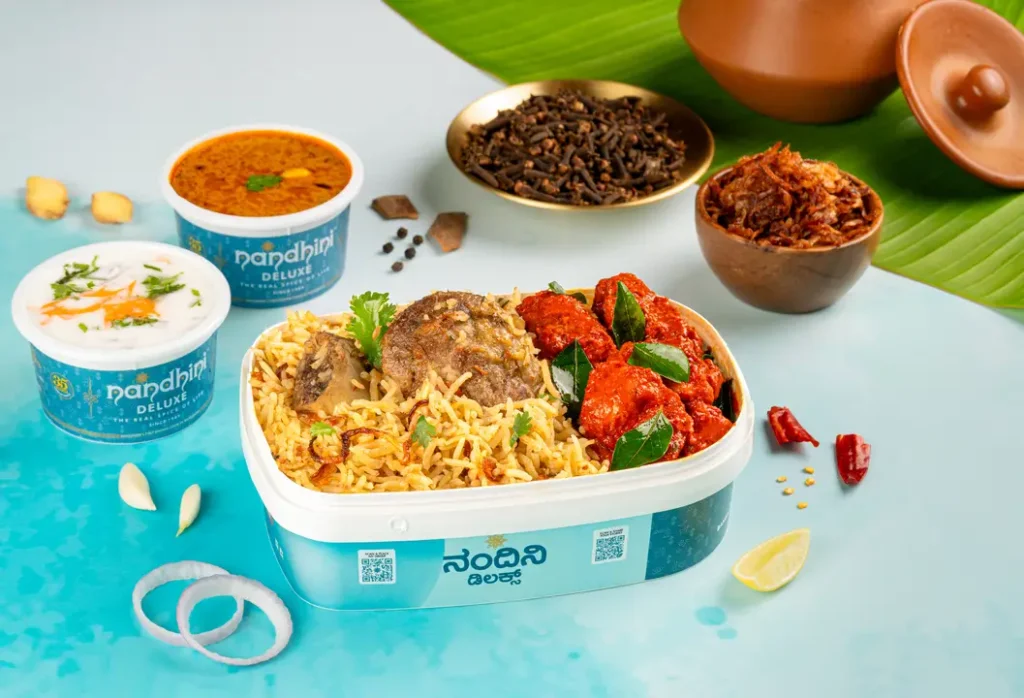
Core Ingredients and Flavor Drivers
Andhra cuisine’s intensity stems not from indiscriminate heat but from precision in its flavor architecture. Every spice, leaf, and seed carries a specific function-binding the dish’s emotion to its geography.
Red chillies, especially those from Guntur, are the cuisine’s backbone. Their pungency defines Rayalaseema’s heat but also underpins the mellow dishes of Coastal Andhra. Tamarind, extracted into a sharp pulp, adds the counterpoint-its acidity balancing the dense oils and pulses that anchor most meals. Curry leaves and mustard seeds appear in nearly every tempering, infusing dishes with aromatic volatility that wakes the appetite before the first bite.
Sesame and groundnut oils are more than cooking mediums; they shape the texture and mouthfeel of Andhra stews and pickles. Sesame, in particular, deepens flavors, adding nutty warmth that supports high-spice dishes like pulusu or kura. Dal, rice, and millets act as stabilizers-textural canvases on which the spices paint their contrast.
Fresh greens like gongura and amaranth inject acidity and mineral complexity, while coconut (especially in coastal variants) softens spice edges. Podi powders-dry spice blends with roasted pulses-illustrate Andhra’s culinary engineering. They deliver flavor that travels, ensuring that intensity isn’t lost even in everyday quick meals.
Pickles and chutneys are not side notes but core flavor bearers. Avakaya (mango pickle), gongura pickle, and garlic podi embody preservation science and spice craft. These condiments bridge seasons, sustain households, and act as cultural memory keepers, especially for Andhra families living outside their home state.
Together, these ingredients create Andhra cuisine’s dual identity-ferocious and comforting, ancient yet experimental. Their role becomes even more fascinating when these building blocks migrate to Bangalore kitchens, where chefs must retain authenticity while considering the city’s milder climate and diverse audience preferences.
Signature Andhra Dishes – Anatomy and Stories
Signature Andhra dishes are not just recipes; they are structured expressions of balance, heat, and emotion. Each dish carries a regional fingerprint-either from the spice-saturated plains of Rayalaseema or the tamarind-rich coastlines of Krishna and Godavari. When these dishes are prepared in Bangalore, they become culinary ambassadors, retaining the depth of tradition while adapting to a more diverse audience.
Pulihora, often called tamarind rice, embodies the idea of flavor discipline. The tamarind pulp is simmered with jaggery, curry leaves, and mustard, producing a tangy base that binds perfectly with steamed rice. In traditional households, it is the food of festivals and travel-a dish that tastes better with time. In Bangalore’s Andhra restaurants, pulihora often features subtler tamarind and reduced chilli levels, making it approachable without dulling its identity.
Gongura pachadi, made from sorrel leaves, defines the soul of Andhra cuisine. Its sharp, lemony tang contrasts beautifully with steamed rice and ghee. The challenge in Bangalore lies in sourcing gongura leaves fresh; restaurants like Nandhini import them regularly to preserve the flavor authenticity.
Gutti vankaya kura, a stuffed brinjal curry, represents the pinnacle of Andhra home cooking. The brinjals are filled with a ground masala of roasted spices and peanuts, cooked slowly until the oil separates. The result is a thick, nutty curry where each bite carries smoky complexity.
Among non-vegetarian dishes, naatu kodi pulusu stands out-a spicy country chicken stew simmered with tamarind, onions, and red chilli paste. It reflects Rayalaseema’s rustic style, intense but not chaotic. In Bangalore, this dish has evolved into a restaurant staple, served with softer textures and slightly tempered spice for wider appeal.
Desserts like bobbatlu and pootharekulu mark the sweet end of the Andhra spectrum. Their intricate textures-thin rice paper sheets or lentil-stuffed pancakes-mirror the cuisine’s devotion to craft and ritual. These dishes may appear at festivals in Bangalore’s Andhra homes and occasionally on restaurant specials, preserving a link between memory and modern dining.
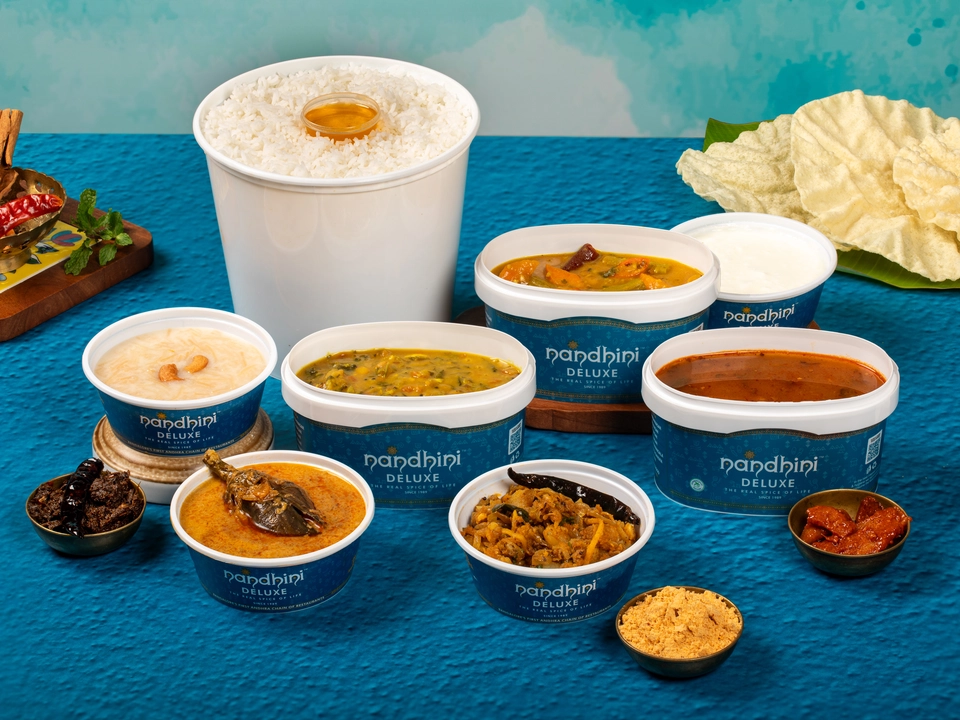
Andhra in Bangalore – Adoption, Adaptation, and Fusion
The arrival of Andhra cuisine in Bangalore began decades ago with waves of migration-students, government officials, and families moving for work brought along their food traditions. Small Andhra messes appeared first in Basavanagudi and Majestic, serving thalis to workers seeking home-style meals. From these humble beginnings emerged restaurant chains like Nandhini, which institutionalized the Andhra dining experience across the city.
Bangalore’s cosmopolitan palate soon embraced the boldness of Andhra flavors, but adaptation was inevitable. The city’s moderate climate, availability of milder chillies, and diverse diners led to measured adjustments. Dishes were crafted to maintain authenticity while offering balanced spice. For example, Rayalaseema-style pulusu stews became lighter, and tangy pachadis were offered in controlled portions to avoid overwhelming new patrons.
Restaurants like Nandhini became specialists in calibration. Their chefs retained the spice architecture but refined proportions for texture, not intensity. The goal was to let the flavors bloom rather than dominate. Gongura, tamarind, and Guntur chillies remained central, but the heat found balance with oil quality, roasting methods, and precise tempering.
Competition also helped the cuisine evolve. Nagarjuna, Bheema’s, and Andhra Ruchulu added their regional nuances, transforming the city into a mosaic of Andhra-style dining experiences. Bangalore’s tech professionals, migrants, and food enthusiasts began associating “Andhra meals” with reliability-affordable, filling, and bursting with layered spice.
As Andhra cuisine spread, fusion experiments followed. Gongura dosa, Andhra-style idlis, and podi-topped bisibele bath became urban favorites. The interplay between local ingredients and Andhra methods gave rise to an entirely new micro-cuisine-Bangalore Andhra Fusion.
Today, this adaptation is both a survival strategy and a creative movement. It ensures that the fiery heart of Andhra food continues to thrive amid Bangalore’s dynamic foodscape, staying rooted in authenticity while resonating with a wider audience.
Restaurant Landscape Map – Nandhini and Its Peers
Bangalore’s Andhra restaurant landscape mirrors the city’s geography: diverse, accessible, and fiercely loyal. Among these, Nandhini stands as a landmark brand-a chain that not only serves Andhra cuisine but defines it for Bangalore’s diners. Established in the late 1980s, Nandhini began as a modest restaurant offering traditional Andhra meals and has since expanded into multiple outlets across the city, each carrying the same signature aroma of ghee, tamarind, and spice.
The Nandhini thali has become a cultural constant. It arrives with rice, sambar, dal, curry, pickle, and papad-every element designed to represent Andhra’s contrast of flavors. For regulars, the gongura chutney is the emotional centerpiece; for newcomers, it’s the initiation ritual into Andhra spice.
Other major players-Nagarjuna, Bheema’s, and Andhra Ruchulu-each interpret Andhra cooking differently. Nagarjuna focuses on traditional Andhra meals with a consistent spice quotient, while Bheema’s leans toward Karnataka integration, slightly mellowing the heat. Andhra Ruchulu adds a casual dining tone, emphasizing family-style portions and milder gravies. Together, they map the spectrum of Andhra authenticity in Bangalore.
The success of these establishments rests on precision in ingredient sourcing. Guntur chillies, sesame oil, tamarind, and gongura are either imported directly from Andhra or procured through trusted suppliers. Kitchens maintain consistency through pre-roasted spice batches and standardized podi mixes.
What differentiates Nandhini, however, is its ability to balance heritage and accessibility. The brand maintains authentic recipes while adjusting portion sizes and spice calibration for the city’s diverse diners. Its multiple outlets ensure that each neighborhood-Koramangala, Rajajinagar, Indiranagar-has access to an authentic Andhra experience without travel or compromise.
This consistency turned Nandhini into more than a restaurant chain; it became a cultural bridge. For many Bangalore residents, a meal at Nandhini is both comfort and education-a reminder that Andhra cuisine’s intensity can exist harmoniously within Bangalore’s softer culinary rhythm.
Palate Adaptation and Spice Modulation
The defining trait of Andhra cuisine-its unapologetic spice-poses both a challenge and an opportunity in Bangalore’s melting pot of tastes. The city’s diners range from heat-seeking purists to first-timers cautious about intensity. This spectrum has compelled Andhra restaurants to evolve with remarkable precision. The adaptation process is not about dilution; it’s about balance and control.
Chefs in Bangalore, especially at established Andhra kitchens like Nandhini, follow a calibrated spice model. Dishes are often prepared in dual intensity modes-traditional and moderate. The foundation remains intact: Guntur chillies for vibrancy, tamarind for acidity, sesame oil for body, and garlic for aromatic depth. What changes is the layering. In Bangalore, chefs often roast chillies longer to mellow sharpness, use thicker tamarind reductions to control tang, and increase dal or vegetable bases to distribute heat evenly.
The city’s moderate weather also plays a subtle role. Unlike coastal Andhra’s humid climate that amplifies spice tolerance, Bangalore’s mild temperatures encourage lighter spice perception. This physiological factor influences menu design, portion sizing, and even service pacing-spice-forward items are paired with cooling elements like curd, lemon rasam, or mild vegetable stir-fries.
Restaurants employ spice modulation techniques inspired by traditional kitchen science. Dry roasting instead of oil frying reduces chili volatility; split seasoning introduces warmth without overwhelming the base. The result is flavor retention without sensory fatigue.
Bangalore diners, accustomed to diverse cuisines, have embraced this calibrated heat. A thali at Nandhini offers an intuitive journey-starting with tangy rice, peaking with spicy pulusu, and ending in cooling curd rice. Each item functions as a rhythm in a symphony rather than a solo of spice.
This controlled evolution demonstrates how Andhra cuisine adapts intelligently to context while keeping its DNA intact. The cuisine in Bangalore no longer burns-it hums.
Fusion Experiments and Cross-Cuisine Creations
Fusion within Andhra cuisine is not a modern invention; it is an extension of its historical adaptability. When introduced to Bangalore’s culinary crossroads, this flexibility led to inventive dishes that speak both languages-the fiery dialect of Andhra and the balanced, textural tone of Karnataka cuisine.
The most visible fusions appear in breakfast and quick-meal categories. Gongura dosa is a leading example-a thin dosa smeared with tangy gongura chutney, creating a burst of sour heat uncommon in traditional dosas. Similarly, podi idli-a soft idli tossed in dry Andhra spice powder-has become a local favorite across Bangalore cafés and delivery menus.
In the mains, bisibele bath with Andhra-style podi is a creative crossover. It combines Karnataka’s comfort rice-lentil mix with Andhra’s nutty podi seasoning, merging aroma with intensity. Coastal influences inspired seafood biryanis infused with gongura or red chilli paste, bringing Andhra’s acidity into Karnataka’s biryani tradition.
Restaurants like Nandhini, known for authenticity, also participate in subtle fusion. Their chefs design seasonal specials that borrow from both traditions-spicy Andhra-style sambar tempered with local vegetables, or tangy rasam infused with regional herbs like dill. These fusions serve dual purposes: satisfying nostalgia for Andhra natives and curiosity for local diners.
Beyond restaurants, Bangalore’s home cooks have taken the lead. Social media recipe circles feature Andhra-style bisibele pulihora, green gram pesarattu with local greens, and millets replacing rice in traditional dishes. This grassroots experimentation ensures Andhra cuisine remains dynamic, responsive, and alive in Bangalore kitchens.
Fusion, when done with respect, deepens identity rather than erases it. The new generation of Bangalore chefs sees Andhra cuisine as a flexible base-rich, scientific, and expressive-ready to engage with other southern flavors while maintaining its signature intensity.
Signature Dishes in Bangalore Context – Localized Classics
Bangalore’s interpretation of classic Andhra dishes reveals how a city can adapt strong culinary identities without loss of authenticity. Each dish in local restaurants carries markers of both origin and adaptation, shaped by ingredient access, diner preferences, and evolving kitchen science.
The Andhra thali is the most recognizable example. In Bangalore, it often includes lighter gravies and moderated spice but preserves the full structure-rice, dal, kura, pachadi, pickle, and dessert. The gongura chutney, though slightly tempered, remains the emotional centerpiece. Thali culture in Bangalore’s Andhra restaurants mirrors the southern concept of complete nourishment: variety as balance.
Naatu kodi pulusu, the fiery chicken stew, is another emblematic dish reshaped by geography. Traditional versions from Rayalaseema use deep red chili and tamarind intensity. Bangalore kitchens refine the consistency and reduce oil while maintaining flavor architecture, allowing a wider audience to enjoy the dish without sensory overwhelm.
Gutti vankaya kura, the stuffed brinjal curry, retains its masala core but adapts roasting times to local brinjal varieties. The nutty aroma of roasted sesame and peanuts provides comfort while aligning with Bangalore’s preference for subtle sweetness.
Pulihora, once a festive travel dish, now occupies a permanent place on restaurant menus. Its acidity is balanced with jaggery and mild chili, making it a versatile companion for both weekday lunches and festival offerings.
The dessert course reflects perhaps the most successful adaptation. Pootharekulu and bobbatlu are now crafted in forms suitable for takeaway-wrapped, portable, and shelf-stable for Bangalore’s on-the-go diners.
Each of these dishes represents a linguistic bridge between two cultures of taste. In Bangalore, Andhra food does not compete with local cuisine-it converses with it. The dialogue produces something unique: a version that is gentle enough for daily dining yet vibrant enough to remind diners of its fiery heritage.
Conclusion – The Living Dialogue of Spice and Tradition
The meeting of Andhra cuisine and Bangalore’s culinary culture is more than a regional crossover-it is an ongoing dialogue between memory and modernity. What began as a migrant comfort has become a defining thread in the city’s food identity. Restaurants such as Nandhini preserve the essence of Andhra food-its rhythm of spice, tang, and texture-while refining it for Bangalore’s broader palate.
This coexistence demonstrates how cuisines evolve without surrendering authenticity. The fiery precision of Andhra cooking adapts to a softer landscape, inviting both nostalgia and curiosity. Bangalore’s diners have learned to appreciate the subtle architecture behind the spice-the way heat interacts with tamarind, how sesame oil deepens aroma, and why a humble pachadi can evoke heritage as vividly as any grand dish.
As Bangalore continues to grow as a culinary capital, Andhra cuisine stands as both a tradition and an innovation-a reminder that true flavor lies in connection, not imitation. The story of this fusion is unfinished, simmering gently in every kitchen that balances fire with warmth, memory with modern rhythm.
FAQ
1. What makes Andhra cuisine different from other South Indian cuisines?
Andhra cuisine is defined by its controlled use of heat and tang, relying on Guntur chillies, tamarind, and sesame oil. While Tamil and Karnataka cuisines lean toward mildness or sweetness, Andhra food prioritizes sharp, layered spice balanced with sourness.
2. How spicy is Andhra food served in Bangalore?
Most restaurants, including Nandhini, adjust spice levels for Bangalore’s mixed audience. The flavor structure remains authentic, but roasting techniques and proportion adjustments moderate sharpness while retaining aroma.
3. Which dishes are recommended for first-time diners?
Pulihora, gutti vankaya kura, and the standard Andhra vegetarian thali are ideal starting points. They showcase core flavors without overwhelming heat, especially when paired with curd rice or ghee.
4. Where can authentic Andhra ingredients be found in Bangalore?
Major city markets like KR Market and Malleswaram offer fresh gongura, chillies, and tamarind. Specialty Andhra stores and online retailers supply podi mixes, pickles, and region-specific spices.
5. How does Nandhini maintain authenticity across multiple outlets?
Nandhini uses standardized spice blends, consistent sourcing from Andhra, and trained chefs who follow the original family recipes. Each outlet replicates the same base tempering and balance of heat, ensuring uniformity and authenticity citywide.
